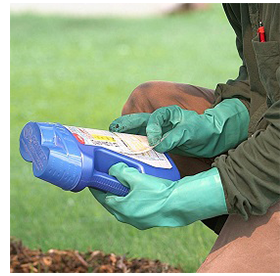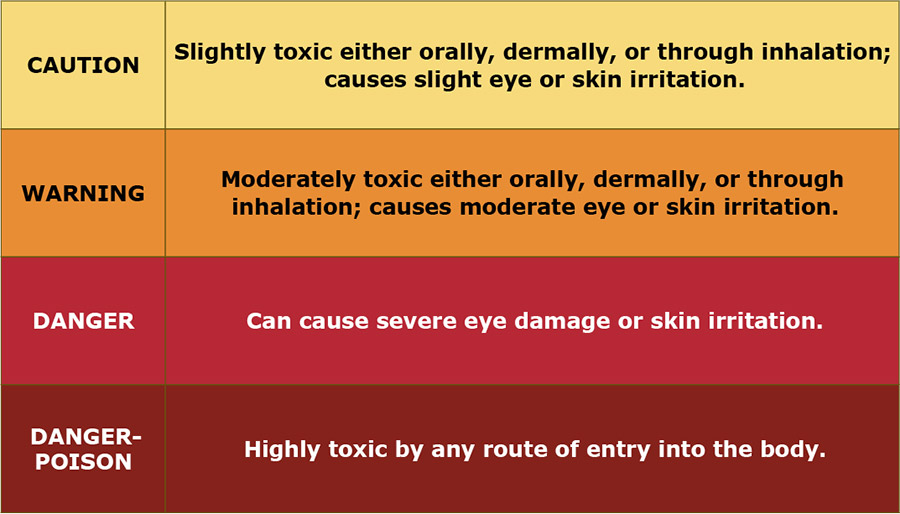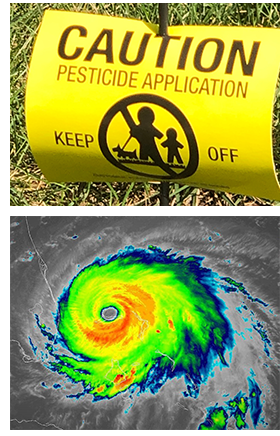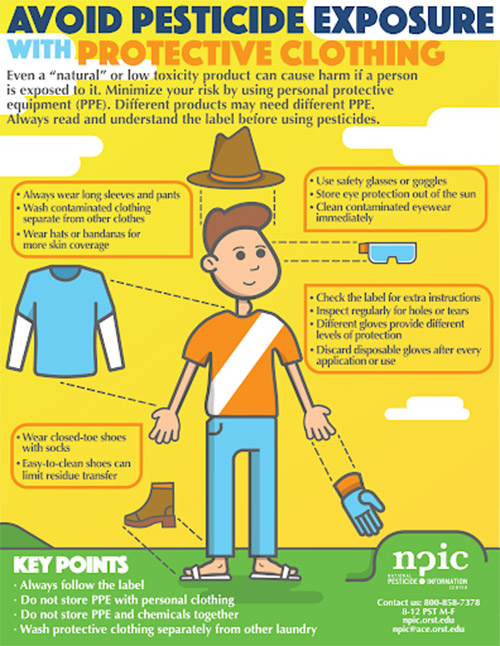Pesticide Safety - Sit Down with CEPRA
While they can get bad press, pesticides are intended to improve the way we go about our daily lives. Pesticides can help us live better by protecting our health, improving our landscapes, keeping our living spaces clean and by protecting our pets. Typically, most people feel that they are only using pesticides with controlling insects. But pesticides are applied to a much wider range of targets. A pesticide is a product that is designed to kill or repel pests, weeds, plant pathogens, mold, and nuisance animals. Typically, when these pests reach damaging levels, using pesticides are the best way to control them.
Pesticides are all poisons to some degree, and all poisons do pose an inherent risk. By their nature, pesticides are hazardous products and demand cautious handling. When used properly, they are of little risk to humans, the environment, or not-target living things. However, when used carelessly, they can have damaging effects. The most important considerations for the safe, effective use of pesticides are to follow all label directions and safety precautions, select the appropriate product, and use the product according to its label directions.
The label directions are written to minimize the risk of problems and to define the legal uses for the product. It is important to read the entire pesticide label before use. As a pesticide applicator, you are legally responsible for reading, understanding, and following the label directions whenever applying pesticides.
Pesticide Labels Contain the Following
 Each pesticide label has on it the Chemical Name, Common Name, Brand Name, Formulation and the Name and Address of the Manufacturer. It lists the US EPA Registration Number. This ensures that the product has been reviewed properly and has been approved for use according to label instructions. An Ingredient Statement that lists each active ingredient and the total amount of inert ingredients is also on the label. A Signal Word is listed on the label, and the selection of word that is used indicates the potential risk of the product to humans. Precautionary Statements warn about potential hazards to humans, domestic animals, and the environment. The label also includes measures that you can take to reduce exposure. It includes fire, explosion, or chemical hazards, and methods to avoid and or minimize risk. The Statement of Practical Treatment describes emergency first aid measures. The words, "KEEP OUT OF THE REACH OF CHILDREN" are always listed and pesticides always must be stored away from children. The Directions for Use identifies the pests the product is registered to control, locations on which the product can be used, in what forms the product is applied, how much to use, and when and where the product should be applied. It also indicates when people can reenter a pesticide treated area. Finally, there is a warning that federal law requires the pesticide to be used according to label directions. Always remember that the LABEL IS THE LAW.
Each pesticide label has on it the Chemical Name, Common Name, Brand Name, Formulation and the Name and Address of the Manufacturer. It lists the US EPA Registration Number. This ensures that the product has been reviewed properly and has been approved for use according to label instructions. An Ingredient Statement that lists each active ingredient and the total amount of inert ingredients is also on the label. A Signal Word is listed on the label, and the selection of word that is used indicates the potential risk of the product to humans. Precautionary Statements warn about potential hazards to humans, domestic animals, and the environment. The label also includes measures that you can take to reduce exposure. It includes fire, explosion, or chemical hazards, and methods to avoid and or minimize risk. The Statement of Practical Treatment describes emergency first aid measures. The words, "KEEP OUT OF THE REACH OF CHILDREN" are always listed and pesticides always must be stored away from children. The Directions for Use identifies the pests the product is registered to control, locations on which the product can be used, in what forms the product is applied, how much to use, and when and where the product should be applied. It also indicates when people can reenter a pesticide treated area. Finally, there is a warning that federal law requires the pesticide to be used according to label directions. Always remember that the LABEL IS THE LAW.

Special Precautions When Using Pesticides
Always use protective measures when handling pesticides. Wear all protective clothing and equipment listed on the label. Typically, "minimal protection" is a long-sleeve shirt, long pants, safety glasses, socks, and shoes, and protective clothing requirements increase from there. Pesticides may enter the body through several routes: by mouth, inhalation, and through the eyes and skin. The vast majority of exposure incidents are through the skin. This is why most pesticides will give specific directions for personal protection. Do not eat, smoke, or drink when handling or applying pesticides. Wash hands thoroughly with soap and water after using pesticides and before eating or using the bathroom.
Do not use products on pests that are not listed on the label and do not use more pesticide than is directed by the label. Using twice the labeled rate will not do twice as good of a job. Overuse of pesticides can have negative consequences on the environment, cause damage to desirable plants and organisms, and is a waste of money. It is illegal to apply pesticides at rates greater than are specified by the products label and it is unsafe practice.
 Strive to only mix the amount of pesticide that you intend to use for the day. Flag with a posting sign to inform people to keep themselves, children, and pets from treated areas until the pesticide has dried or as recommended by the label. Routinely calibrate and maintain application equipment so that pesticides are applied in an accurate and uniform manner.
Strive to only mix the amount of pesticide that you intend to use for the day. Flag with a posting sign to inform people to keep themselves, children, and pets from treated areas until the pesticide has dried or as recommended by the label. Routinely calibrate and maintain application equipment so that pesticides are applied in an accurate and uniform manner.
Keep in mind the projected weather forecast when scheduling pesticide applications. Do not spray on a windy day because the pesticide spray will drift to undesirable targets leading to potential negative results. Postpone and reschedule applications prior to projected significant rain events such as a tropical depression or hurricane - this will prevent pesticides from leaching into the aquifer, or running off into a body of water.
Storage
Store pesticides out of the reach of children and pets and under lock and key from unauthorized people. Pesticides should be stored in their original containers, with labels visible and intact. NEVER store a pesticide in a food or drink container, because someone may mistake it for something edible.

Disposal of Pesticides
Never pour pesticides down drains, toilets, or sewers. Never put pesticides directly into the garbage. An empty pesticide container is considered hazardous waste. Always triple rinse all plastic chemical containers and puncture them before putting it into the trash. Do not reuse pesticide containers.
Conclusion
From purchase to disposal, pesticides demand cautious handling. Remember to correctly identify the pest so that you choose the appropriate pesticide. Thoroughly read the label and follow all instructions, to ensure a successful reduction in your pest population safeguarding yourself and the wellbeing of non-target organisms in the environment.

